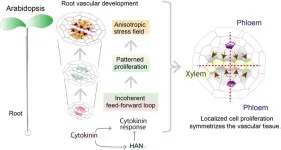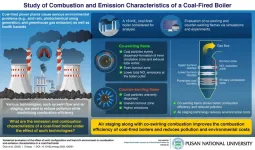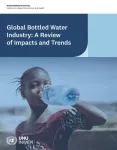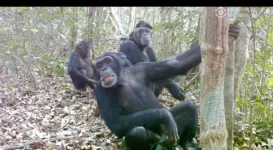Indigenous Ashaninka DNA helps geneticists write new chapters of pre-colonial history in South America
2023-03-16
(Press-News.org)
Geneticists have written new chapters in the reconstruction of pre-colonial Americas history after using DNA from the indigenous Ashaninka people from Amazonian Peru. They have discovered previously unexpected levels of genetic variation in this group and uncovered a strong hint that these people were involved in a South-to-North migration that led to the transition from an archaic to ceramic culture in the Caribbean islands.
The dramatic impact of European colonisation during the second half of the last millennium has strongly influenced the genetic history of the Americas, making the reconstruction of the American genetic history difficult compared to other continents.
The most informative sources that can allow us to go back into the indigenous genetic history are the ancient DNA and the DNA from modern individuals belonging to Indigenous groups. For the latter, the inner region of South America is significantly underrepresented.
For these reasons, the scientists – led by Alessandro Achilli, Professor of Genetics at the Dept. of Biology and Biotechnology “L. Spallanzani” in the University of Pavia, and Marco Rosario Capodiferro, Postdoctoral Researcher in Trinity College Dublin’s School of Genetics and Microbiology – focused on a specific Indigenous group from Amazonian Peru, the Ashaninka, in the new study that has just been published in leading international journal, Current Biology.
The Ashaninka are an Arawakan-speaking group and the largest Indigenous group from the Amazonian areas of Peru.
The genetic data of more than 50 Ashaninka individuals were merged to a large worldwide dataset of modern individuals to help the geneticists make their comparisons. In addition, more than 500 genomes of ancient Siberian and especially American individuals were added to get details of the past genetic history. This abundant dataset was then investigated with many of the latest approaches used in population genomics.
Three key discoveries
Surprisingly, the group was more genetically diverse than expected, with the geneticists identifying at least two different genetic groups. Although the Ashaninka genetic groups are very close to each other, past and probably continuing relations with neighbouring populations, especially those of the Peruvian coast, led to this diversification.
All the Ashaninkas have a common origin, derived from the South-Eastern or the Southern part of the South American continent – although the addition of genomic data from ancient individuals from the inner region of South America will be needed to corroborate this result.
In a broader context, the Ashaninka and other Arawakan populations are the closest to the Caribbean ancient groups associated with Ceramic cultures. This genetic link suggests Ashaninka and Arawakan ancestors from the inner part of South America were involved in the South-to-North migration, which led to the transition from Archaic to Ceramics cultures in the Caribbean Islands.
Dr Capodiferro said:
“In combination, these exciting findings open a new line of investigation focused on the inner regions of the American continent and highlight the importance of microgeographic studies, and of the history of a single and specific Indigenous group. They give value to the genetic and cultural heritage inherited from Indigenous groups and allow us to understand fundamental information that impacts the whole continent.
Prof. Achilli concluded:
“Our work outlines that there is still much to be discovered about Indigenous American groups. The next step for us is to explore the entire genome of Ashaninka and other Indigenous groups by using ancient DNA from archaeological sites on the same – and surrounding – areas and covering a wider timeframe, from early Holocene through colonial times, to further refine the region’s genetic history.”
This work has involved researchers from different states, such as Italy, Ireland, Peru, Brazil, Argentina, USA, Estonia, Germany, Switzerland, and Austria.
END
ELSE PRESS RELEASES FROM THIS DATE:
2023-03-16
About The Study: This survey study found that people with disabilities were more likely to report household employment loss and financial hardship during the initial COVID-19 pandemic, which are especially pronounced among racial and ethnic minority respondents. These findings suggest people with disabilities may be disproportionately affected by the initial pandemic and may require additional resources and policy strategies (e.g., training programs, workplace accommodations) as several labor markets adapt to the pandemic (e.g., shifting to remote working).
Authors: Kea Turner, Ph.D., M.P.H., M.A., of the H. Lee Moffitt Cancer Center ...
2023-03-16
About The Study: In this study of 722,000 hospitalization episodes, patients with Alzheimer disease and related dementias (ADRD) had higher readmission rates and overall readmission and episode costs than their counterparts without ADRD. Hospitals may need to be better equipped to care for patients with ADRD, especially in the post-discharge period. Considering that any type of hospitalization may put patients with ADRD at a high risk of 30-day readmission, judicious preoperative assessment, postoperative discharge, and ...
2023-03-16
Preterm infants do not get used to repeated pain in the way that full-term infants, children and adults do habituate to pain, finds a study led by UCL (University College London) researchers.
The authors of the new Current Biology paper say that if preterm infants have not yet developed the mechanism that enables people to get used to moderate pain, medical procedures in their first few weeks of life could potentially impact their development.
Lead author Dr Lorenzo Fabrizi (UCL Neuroscience, Physiology & Pharmacology) said: “The way that we can get used to things can be seen as the simplest example of behavioural and brain plasticity, and it is ...
2023-03-16
Ikoma, Japan – The generation and maintenance of tissue boundaries are fundamental to the development of functional organs in both plants and animals. In general, tissue boundaries are initially set among primordial cells, and their shapes and arrangements are refined during subsequent organ growth. In this process, cell migration plays a curtail role for boundary refinement in animal systems, however, plant tissue lacks such cell fluidity due to its cell walls. Despite significant progress in understanding the initial patterning of tissue boundaries in several ...
2023-03-16
A recent study makes it clear: Countries like Sweden that can link data from different areas - such as the labor market and health care - have a decisive advantage when it comes to setting targeted actions.
A research team from the Complexity Science Hub, together with scientists from Sweden, Denmark and the Netherlands, investigated the extent to which mental and somatic illnesses influence integration into the labor market and whether there is a difference here between refugee and Swedish-born young adults. "In total, we analyzed ...
2023-03-16
Coal-fired power plants have been in place for a long time to meet the global demands for power generation. Needless to say, there are environmental and human health concerns to be addressed on this front. While there are ongoing efforts to transition to renewable energy resources, coal-fired power plants may not become obsolete just yet. Against this backdrop, it is pertinent to explore how the efficiency of these coal-fired boilers can be improved while mitigating their harmful effects on the environment, namely greenhouse gas emissions, acid rain, and photochemical smog generation, and the human health.
To this end, various ...
2023-03-16
The rapidly-growing bottled water industry can undermine progress towards a key sustainable development goal: safe water for all, says a new United Nations report.
Based on an analysis of literature and data from 109 countries, the report says that in just five decades bottled water has developed into “a major and essentially standalone economic sector,” experiencing 73% growth from 2010 to 2020. And sales are expected to almost double by 2030, from US$ 270 billion to $500 billion.
Released ...
2023-03-16
(WASHINGTON, March 16, 2023) – While research has long established disparities in health outcomes among individuals living with sickle cell disease (SCD), few studies have quantified these gaps. A new study published in Blood Advances finds that the average life expectancy of publicly insured patients living with SCD is roughly 52.6 years. In contrast, the CDC reports that the average life expectancy in the United States is 73.5 years for men and 79.3 years for women, demonstrating the considerable ...
2023-03-16
The western chimpanzees of Guinea are threatened by mining activities. Using a novel genetic approach, UZH researchers and an international team have collected information on population size and community structure of the endangered species. These data provide an important baseline to assess the impact of mining.
The western chimpanzee is listed as “Critically Endangered” on the Red List of the International Union for the Conservation of Nature. The Mount Nimba Strict Nature Reserve, a UNESCO World Heritage site, located on the borders of Guinea, Liberia and Côte ...
2023-03-16
The future of wireless communications is set to take a giant leap with the advent of sixth-generation (6G) wireless technology. A research team at City University of Hong Kong (CityU) invented a groundbreaking tunable terahertz (THz) meta-device that can control the radiation direction and coverage area of THz beams. By rotating its metasurface, the device can promptly direct the 6G signal only to a designated recipient, minimizing power leakage and enhancing privacy. It is expected to provide a highly adjustable, directional and secure means for future 6G communications systems.
The potential of THz band technology ...
LAST 30 PRESS RELEASES:
[Press-News.org] Indigenous Ashaninka DNA helps geneticists write new chapters of pre-colonial history in South America




